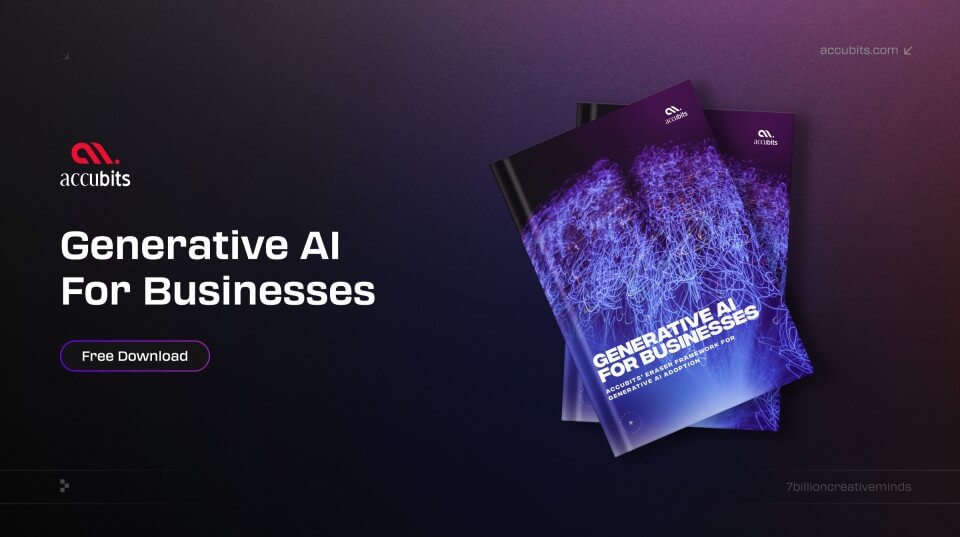

LLMs Explained,
Pythia
The Pythia suite comprises 16 LLMs, which have undergone training on publicly available data in a consistent sequence. These models vary in parameter size, ranging from 70M to 12B. For each of the 16 models, there are 154 checkpoints accessible to the public, along with accompanying tools that facilitate the downloading and reconstruction of their precise training dataloaders, enabling further examination and analysis.
Model Details View All Models
View All Models 
100+ Technical Experts

50 Custom AI projects

4.8 Minimum Rating
An Overview of Pythia
Pythia aims to facilitate research in various domains related to large language models. It presents several intriguing case studies, including investigations into memorization, the impact of term frequency on few-shot performance, and techniques for reducing gender bias.
Pythia is a suite of 16 LLMs trained on public data
Suite of 16 trained LLMs
Pythia brings forth a suite of 16 large language models (LLMs) that have been meticulously trained in a controlled environment, ensuring that they all received the same data in the same order.
Pythia models have size ranges from 70M to 12B parameters
70M to 12B parameters
Ranging in size from 70M to 12B parameters, the Pythia models offer a diverse range of capacities and capabilities for in-depth analysis and exploration.
Access to 154 checkpoints for each model
Access to 154 checkpoints
Pythia Suite gives encourages further research and study with the model, hence it provides access to 154 checkpoints for each model and their training data loaders.
Blockchain Success Starts here


-
Introduction
-
Business Applications
-
Model Tasks
-
Fine-tuning
-
Benchmarking
-
Limitations
-
Other LLMs
Model Details
Pythia is a suite of 16 large language models (LLMs) developed to study the behavior and dynamics of LLMs during training and scaling. These LLMs were trained on public data in the same order, ranging in size from 70M to 12B parameters. The purpose of Pythia is to provide a controlled and accessible environment for research in various areas related to LLMs. Pythia aims to offer insights into LLMs and their training dynamics through case studies on memorization, term frequency effects on few-shot performance, and reducing gender bias.
Model Type: Decoder-only autoregressive models
Language(s): English
License: Apache-2.0
Model highlights
The Pythia suite models are trained using various programming languages, including Python and associated libraries such as PyTorch. The suite is available under an open-source license, allowing researchers to access and use the models for their studies. Pythia provides public access to 154 checkpoints for each of the 16 models. Researchers can download and reconstruct the exact training data loaders for further study.
Parallel Attention and Feedforward
In parallel attention, the model processes multiple chunks or segments of input data simultaneously, allowing for efficient and parallelized computation. This helps improve the model's ability to handle longer sequences and speeds up training and inference. With the feedforward component, each layer applies a non-linear transformation to the input, enhancing the model's ability to capture complex patterns and dependencies in the data.
Flash Attention
The model architecture and hyperparameters largely follow Brown et al. (2020), with a few notable deviations. Instead of using sparse and dense
attention layers in alternation, the model uses only fully dense layers. The model uses flash attention during training for improved device throughput.
Rotary Embeddings
Rotary embeddings are a technique used in Large Language Models (LLMs) to enhance the positional encoding of input data. It introduces a dynamic rotational component to the embeddings. The model uses rotary embeddings as the positional embedding type of choice. The model also un embedding/unembedding matrices to make interpretability research easier.

Training Details
Training Data
The models in the Pythia suite are trained on public data using the GPTNeoX open-source library developed by EleutherAI. Two versions of the training data are used: the standard Pile and the deduplicated Pile. The standard Pile contains 334B tokens, while the deduplicated Pile contains 207B tokens. The models are trained for approximately 300B tokens, matching the scale of the original GPT-3 and OPT model suites.


Training Overview
The models are trained on approximately 300 billion tokens, which are carefully matched to the original GPT-3 and OPT model suites. Training uses Adam optimizer and the Zero Redundancy Optimizer (ZeRO) to scale to multi-machine setups efficiently. Data parallelism and tensor parallelism techniques are employed to optimize performance. Flash Attention is utilized to improve hardware throughput.


Training Objective
The primary objective of training the Pythia models is to understand the behavior and dynamics of large language models across different scales. Specific case studies are conducted, including analysis of memorization, the impact of term frequency on few-shot performance, and efforts to reduce gender bias.


Training Observation
A notable departure from standard training procedures is the use of larger batch sizes. Despite previous literature suggesting convergence issues for smaller models with large batch sizes, the Pythia models show no such issues. The use of larger batch sizes results in significant wall-clock speed-ups, allowing for faster training times.


Model Types
Models are named based on their total number of parameters, but for most analyses, the developers recommend using the number of non-embedding parameters as the measure of “size.” Models marked as “equivalent” have the same architecture and number of non-embedding parameters.
| Model Size | Non-Embedding Params | Layers | Model Dim | Heads |
| 70 M | 18,915,328 | 6 | 512 | 8 |
| 160 M | 85,056,000 | 12 | 768 | 12 |
| 410 M | 302,311,424 | 24 | 1024 | 16 |
| 1.0 B | 805,736,448 | 16 | 2048 | 8 |
| 1.4 B | 1,208,602,624 | 24 | 2048 | 16 |
| 2.8 B | 2,517,652,480 | 32 | 2560 | 32 |
| 6.9 B | 6,444,163,072 | 32 | 4096 | 32 |
| 12 B | 11,327,027,200 | 36 | 5120 | 40 |
Business Applications
The publishers states that the Pythia Suite is not intended for deployment. It is not a in itself a product and cannot be used for human-facing interactions. The model may generate harmful or offensive text. The publishers also recommends to evaluate the risks associated with your particular use case. Pythia models are English-language only, and are not suitable for translation or generating text in other languages.
Model Tasks
The publisher provides detailed evaluation scores and plots throughout training for select benchmarks. They also report raw scores for the final trained models and comparisons to baseline model suites on a number of standard NLP tasks.
Language Modeling
Language modeling involves training models to predict the next word or sequence of words in a given context. It focuses on understanding and generating coherent and fluent text based on the patterns and relationships present in the training data.
Reasoning physical events and interactions
This task involves equipping language models with the ability to understand and reason about everyday physical events and interactions. It enables the models to make inferences and draw conclusions about the likely outcomes or consequences of different actions in various real-world scenarios.
Disambiguation of pronouns
The task of pronoun disambiguation aims to accurately determine the referent of a pronoun within a sentence. It requires language models to analyze the contextual information and resolve any ambiguity associated with pronouns, ensuring that the correct antecedent or referent is identified and understood.
Advanced science question answering
This task focuses on training language models to comprehend and answer complex questions related to scientific topics. It involves deep understanding of scientific concepts, logical reasoning, and the ability to extract relevant information from text sources to provide accurate and detailed answers to challenging scientific queries.
Reasoning social interactions and dynamics
Language models are trained to reason about social interactions and dynamics by understanding and interpreting social contexts, relationships, and behaviors. This enables them to generate responses, predict outcomes, or make inferences based on the given social scenario.
Logical thinking
The task of logical thinking involves training language models to engage in logical reasoning and draw valid conclusions based on logical principles. It includes tasks such as syllogism solving, mathematical problem-solving, and evaluating logical arguments, enabling the models to exhibit higher-order thinking skills and logical coherence in their responses.
Fine-tuning
Pythia-1.4B has not been fine-tuned for downstream contexts in which language models are commonly deployed, such as writing genre prose, or commercial chatbots. This means Pythia-1.4B will not respond to a given prompt the way a product like ChatGPT does. This is because, unlike this model, ChatGPT was fine-tuned using methods such as Reinforcement Learning from Human Feedback (RLHF) to better “follow” human instructions.
Benchmark Results
Benchmarking is an important process to evaluate the performance of any language model. The key results from evaluations are given below:



Limitations
Pythia is a powerful LLM that can be used for a variety of tasks. It is important to be aware of the model's limitations, such as its bias and lack of interpretability, when using it for real-world applications.
Bias
Pythia, like other LLMs, is susceptible to bias. This can be a problem when the model is used for tasks such as translation and question answering.
Interpretability
Pythia, like other LLMs, is not very interpretable. This can make it difficult to understand how the model works and why it makes the predictions that it does.





